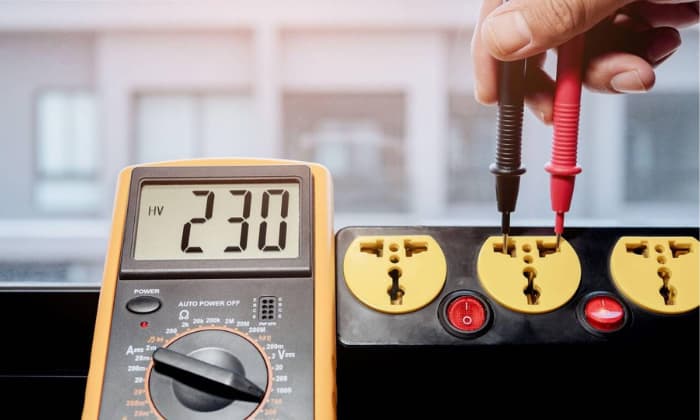Safe electrical usage means verifying a device’s power draw. So, you’re now wondering how many amps is 5500 watts.
Using the formula, Amps = Watts / Volts, 5,500 watts using 120 volts has 45.83 amps. On the other hand, the same device will have a 22.92 amp draw if it’s using 240 volts.
Note that the calculations differ if you’re looking for the amps in a single- or three-phase AC. So, continue reading to learn the different formulas to use when converting watts to amps.
Table of Contents
Calculating Amps from Watts
Finding the wattage can be calculated using Ohm’s Law. In particular, use:
\begin{equation}
P = V \times I
\end{equation}
wherein P is the power in watts, V is the voltage, and I is the voltage.
As mentioned earlier, this formula changes depending on the type of current. Below are the different ways to convert amps from watts based on the current use.
Furthermore, you can employ this tool for a quick amperage calculation.
1. Direct Current (DC)
DC is a unidirectional current. So, its charge will always be in the same direction. It also uses the standard formula dictated by Ohm’s Law. For example, a 5,500-watt 110v device will have a 50-amp power draw.
On the other hand, a 5,500-watt device at 220 volts will draw less power than its 110-volt counterpart. In particular, this 220-volt 5,500-watt variant will have a 25-amp power draw.
2. Single-Phase Alternating Current (AC)
Unlike DC, AC is the flow of electricity that reverses in direction at regular intervals. Commonly used in residential settings, single-phase AC can help accommodate high electrical loads.
Use the following formula to calculate single-phase AC from watts:
\begin{equation}
\text{Amps} = \frac{1,000 \times \text{Kilowatt}}{\text{Power Factor (PF)} \times \text{Voltage}}
\end{equation}
Assuming that the PF is 1, then the formula becomes:
\begin{equation}
\text{Amps} = \frac{1,000 \times \text{Kilowatt}}{1 \times \text{Voltage}}
\end{equation}
For example, a 5,500-watt or 5.5-kilowatt device at 120 volts will have a 45.83 amp draw. If a device has the same wattage rating but it’s running on a 240-volt line, the power draw becomes 22.92 amps.
3. Three-Phase Alternating Current (AC)
Unlike single-phase AC, three-phase AC is generally more common in commercial and industrial settings than residences. It also typically allows better power supply delivery at a steadier and more constant rate than its single-phase variant.
Additionally, calculating a three-phase AC depends if it uses line-to-line or line-to-neutral voltage. Use the following formula to find out the amps of a three-phase AC using line-to-line voltage:
\begin{equation}
\text{Amps} = \frac{1,000 \times \text{kW}}{\sqrt{3} \times \text{Power Factor} \times \text{Voltage}}
\end{equation}
For example, a 5,500-watt device at 240 volts using a PF of 1 has an amp draw of 13.23 amps. But the formula changes into the following for line-to-neutral voltage:
\begin{equation}
A = \frac{1,000 \times kW}{3 \times \text{Power Factor} \times \text{Voltage}}
\end{equation}
Assuming you’re using the same values for wattage, voltage, and power factor from the previous example. If so, the amp draw becomes 7.64 amps using a line-to-neutral voltage.
Apart from using these formulas, you can use an online watts-to-amps calculator to skip the manual calculations. Some calculators can also allow single- and three-phase AC computations.
Conclusion
Remember, calculating how many amps is 5500 watts means identifying (and verifying) the electrical device’s wattage and voltage ratings. Then, use Ohm’s Law to find the amp draw with those given values in DC.
Alternatively, use different formulas to calculate the amp draw of a 5,500-watt unit if it’s in a single-phase or three-phase AC. Also, if it has a three-phase AC, verify if it’s a line-to-line or line-to-neutral voltage to use the correct formula.

I am Andrew Wright. With 8 years of experience designing, installing, and maintaining electrical power systems. I love my job, and I have always wanted to offer others the necessary help so they can take care of their houses.





